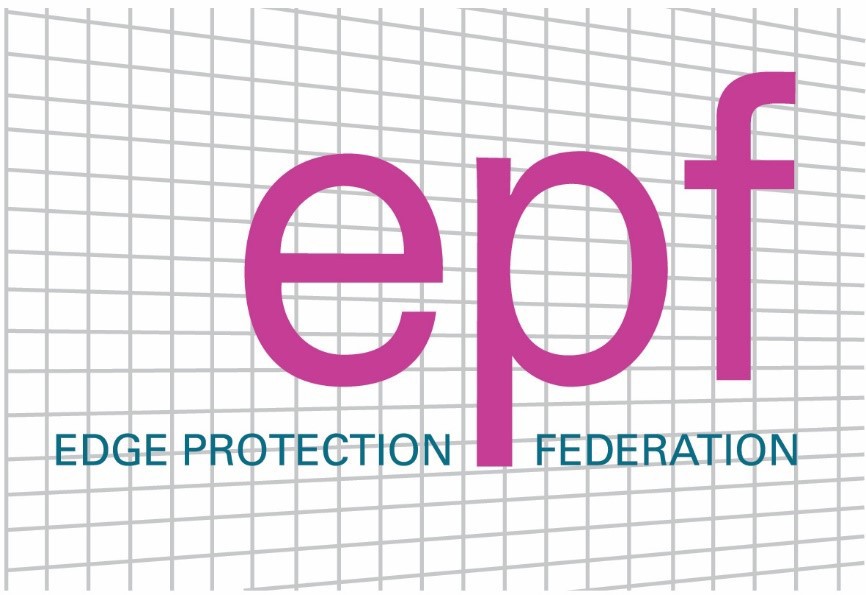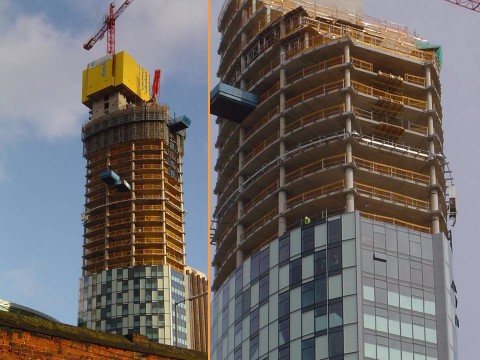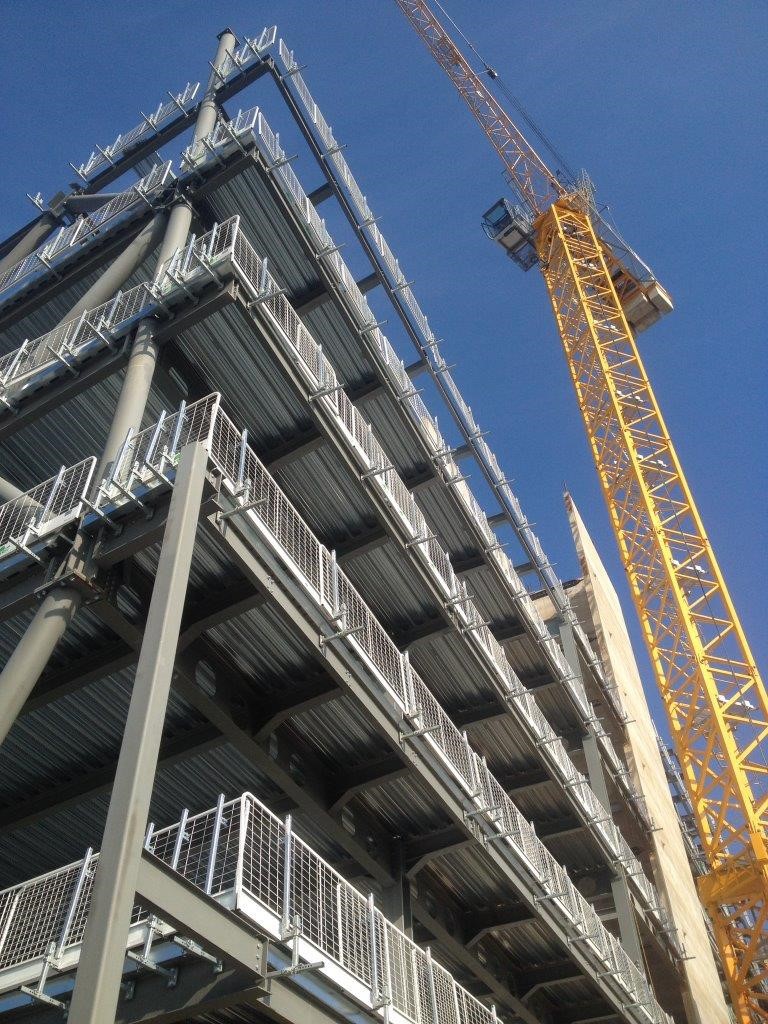
Kelly Rose
Editor

Kelly Rose
Editor
Edge protection is often used as a general term for the provision of guardrails and barriers in order to protect against falls, but according to Peter Bond, chairman, of the Edge Protection Federation, it is a widely varying work at height industry encompassing falls from a myriad of surfaces.
The Federation's membership now covers a wide variety of products and systems that have mushroomed over the past 12 years. The catalyst was the publication of BS EN 13374: The Standard for Temporary Edge Protection Systems. This led to the establishment of the Edge Protection Federation.
One of the outcomes of the effect of the Standard is that there are solutions for concrete, steel frame or even timber frame buildings each employing a variety of fixing methods.
Until the introduction of BS EN 13374, edge protection was confined to tube and fitting solutions, apart from a small number of specialist products. Since then, tubular scaffolding has been replaced in many applications except for industrial steel frame perimeter guardrails. In each case the role of the scaffolder has been reduced, and replaced by other product solutions.
The requirements of the Standard present a strength and deflection requirement that is a common performance level, tied to specified test methods, and materials, in order to ensure the integrity of the systems employed.
Beyond BS EN 13374
Edge Protection now sits alongside well established work at height solutions such as scaffolding, and fall arrest equipment such as harnesses, in addition to
safety netting methods (where we collaborate from time to time) and newer technologies like climbing screens. At present we are drafting guidance for
applications that go beyond the scope of the Standard, in conjunction with FASET.
Role of the Code of Practice
As safety professionals will be well aware, a Code of Practice can be a highly influential document in establishing Best Practice, usually by industry specialists. That has certainly been the case with the Edge Protection Federation’s Code of Practice, updated in 2014, and containing even more edge protection concepts.
There are a considerable number of different brands and product types, which have one key issue in common: compliance with BS EN 13374 (which has also recently been reviewed and updated in 2013). That compliance means that there is a common standard of performance for such systems.
Principal types
The principal types of BS EN 13374 compliant systems can be classified as follows:
In addition to the above there are solutions for concrete staircases, excavations, falls from vehicles, and mobile anchors.
Fixing methods for each application will vary, as some are anchored into the concrete slab, or friction secured, bolting to steel frame components, and clamping to other concrete or steel members.
Other developments
The need to provide better means of edge protection has led to systems for what is known as ‘Extended Height Containment’, ie: edge protection which goes beyond the normal legal guardrail height, sometimes up to soffit height and ‘Climbing Screens’. The EPF has guidance for Extended Height Containment on our website.
Climbing Screens are large edge protection panels that typically give protection over several stories at the same time, providing protection for workers at casting, erecting and striking levels as well as follow on trades. They require considerable design input and remain a hybrid edge protection solution as they go well beyond the scope of BS EN 13374.
We are about to publish guidelines for Climbing Screens, the first of its kind in the UK. That guidance will cover many aspects including types, applications, material, design, and client and contractor responsibilities.
The most typical applications for Climbing Screens are for multi-storey, high rise projects.
The need for training
It is important that clients seek evidence of appropriate training and qualifications for what is clearly one of the more hazardous construction related tasks. The EPF training programme, which incorporates each of the main proprietary suppliers’ products, is an ideal way of providing such evidence. The EPF course is primarily for installers, but a new Edge Protection Manager's Course will shortly be available.
The EPF Course can be seen as similar in concept to the PASMA or IPAF type of training and has become the accepted skill card for the edge protection industry.
Member of AIF
The recognition of edge protection as a prime safety solution can be seen in the fact that the Edge Protection Federation is a member of the Access Industry Forum, which is a voice for many of the key Work at Height organisations. They are often consulted by employers and the HSE on health and safety matters related to work at height.
Industry safety Issues
With the introduction of the CDM Regulations 2015, it seems a convenient point to highlight some issues that concern industry members.
There is an urgent need for designers and contractors to consider the problems posed by a myriad of designs, with insufficient consideration for access and temporary edge protection either prior or subsequent to the building construction. This is a requirement under the CDM Regulations.
Examples of this include steel framed industrial buildings with steel column centres set at 8 and 9m centres, with no intermediate structural supports for edge protection, as many lack rigidity or are made of cold rolled section. Compliance with BS EN 13374 has become very difficult due to the lack of rigid fixing points.
This is a subject of great concern to EPF Members.
The edge protection industry
In conclusion, edge protection is a vital part of the armoury of safety solutions to minimise risks to health and safety on site. Falls from leading edges are undoubtedly a major high risk factor, and we would encourage all those concerned with these applications to acquaint themselves with the provisions of BS EN 13374 and to take advantage of the free download of the 2014 EPF Code of Practice.




Edge Protection Federation (EPF)
PO Box 146
Whitchurch
SY13 9AP
UNITED KINGDOM
01948 780474